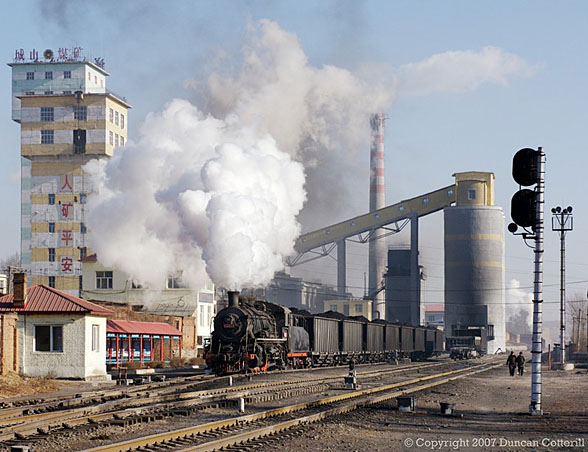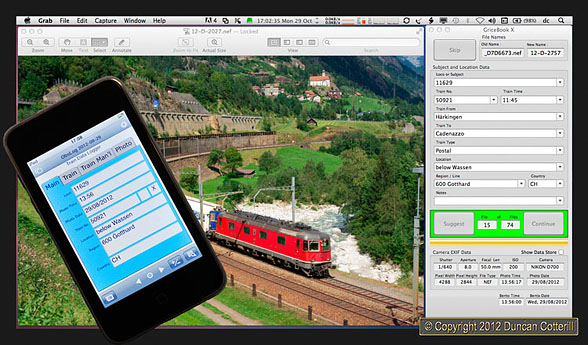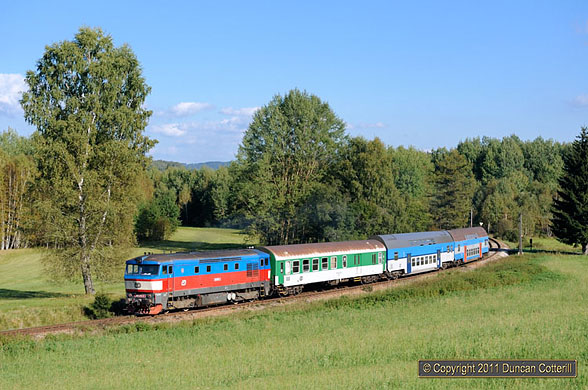Welcome
Welcome to Railography. As the name suggests, this website features railway photography. As well as being a vehicle for showcasing my own pictures it also contains related material that may be useful to others, such as trip reports, locomotive profiles and the most comprehensive listing of Chinese steam locomotives and where they worked.
Geographical coverage is fairly patchy at the moment, concentrating on China and Central Europe. Most pictures on the site were taken after 2003 on digital equipment but there's much more material in the archives. Older pictures will be added in due course including many from Canada and the USA, southern Africa and the Indian subcontinent as well as older European shots, Chinese steam from the 1980s onwards and a vast collection of British diesels. However, it's all on film and requires scanning, which will probably take a very long time.

The perfect cure for stress - a sight like this in your viewfinder can stimulate endorphin release
It’s a great way to unwind from a stressful job, a good excuse to visit the parts other travellers rarely reach, very satisfying when you do get it right and, unlike many hobbies or sports, there’s usually something to show for your efforts when the trip’s over. Trainspotting with a camera it isn’t.
Enjoy the pictures, I’ve certainly enjoyed taking them.

Top:
SY1340 on the Chengzihe mining system, Jixi, Heilongjiang, China in November 2007.Photo Captioning for the Digital Age:
Details recorded on a smart device in the field can be paired with the appropriate photo and stored as metadata in the image file itself. Everywhere the picture goes, the details automatically follow.Below:
749.051 left Nova Pec on the Ceske Budejovice - Nove Udoli line in the Czech Republic in September 2011.Building The Website
Most of the pictures reproduced on Railography were taken since 2003 on digital equipment, mainly Nikon DSLRs. Since 2009 the full-frame Nikon D700 has been the camera of choice with a trusty APS format D2x acting as backup. A newly acquired Nikon D600 means that full-frame images will be the rule going forward.
Image processing has evolved over the years with numerous techniques and different combinations of software tried at different times before settling on a satisfactory workflow a couple of years ago.
Each day's pictures are copied to a Macbook Air in the evening, captioned with data recorded on an iPod Touch in the field, uploaded to an Aperture database and backed up to a stand-alone disk. At the end of the trip, the database, complete with pictures and captions, is imported into Aperture on my desktop machine. The ease with which different applications can be made to work together on a Mac, using Automator and Applescript to automate the more monotonous tasks, makes the whole process fairly painless and it's not unusual to deal with a hundred or more images in this way after a good day on the lineside.

The vast majority of photos are now taken as RAW files and processed using Nikon Capture NX2 to render the image and apply colour and tonal corrections before doing the final tweaks in Adobe Photoshop. My collection of digital images now runs to over 42000 files, weighing in at around 400GB, all stored in Aperture with multiple onsite and offsite backups just in case.
The website itself is produced on a Mac with Realmac Software's Rapidweaver 5 doing most of the donkey work. One of the nice things about Rapidweaver is the ability to design your own theme, personalising the appearance of the site, while letting the software handle the bulk of the fiddly coding. Just because I can code HTML doesn't mean I want to spend hours doing it. The range of plug-ins available to extend Rapidweaver's capabilities is considerable with Yourhead's Stacks 2 and RWExtra's Gutenberg being current favourites.
